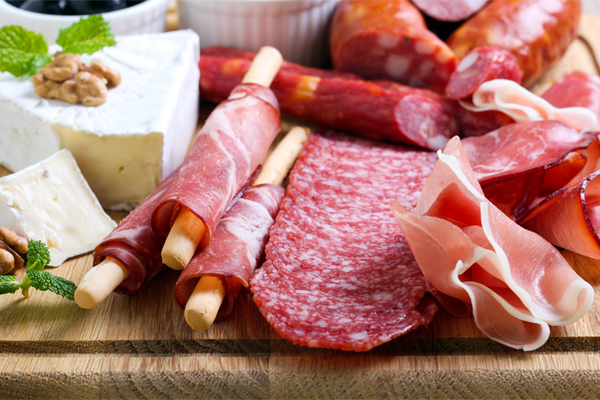Germany has established itself as a European powerhouse in ham production and export, with the country producing over 1.5 million metric tons of ham annually and ranking as the world’s third-largest ham producer after China and the United States. The German ham and jambon market, valued at $2.69 billion in 2025, is projected to grow at a 3.22% CAGR through 2030, driven by premium specialty products, traditional Black Forest varieties, and strong export performance across global markets.
Market Overview and Production Ham and Jambon Capacity
Industry Size and Economic Impact
Germany’s meat processing industry generates €25.9 billion in revenue (2025), with ham and bacon products representing a significant segment within the broader processed meat portfolio. The country’s ham and bacon market alone accounts for $2.69 billion annually, positioning Germany as a major player in European and global markets.statista+1
Key Market Statistics:
- Annual ham production: 1.5+ million metric tons
- Global ranking: 3rd largest ham producer worldwide
- Export volume (2023): 143.19 million kg (8.48% global export share)
- Import volume (2023): 89.44 million kg (4.67% global import share)
- Trade balance: Strong positive, indicating net export leadership
Ham and Jambon Production Trends and Capacity
Despite facing challenges from regulatory pressure and declining domestic consumption, Germany’s meat production showed slight recovery in 2024 for the first time in seven years. Total meat production reached 6.9 million tonnes, with pork production at 4.3 million tonnes (1.9% increase), providing substantial raw material for ham processing.ibisworld
Production Characteristics:
- Pork dominance: 4.3 million tonnes annual production
- Processing efficiency: Advanced facilities with high automation
- Quality standards: EU regulations and premium certifications
- Geographic concentration: North Rhine-Westphalia, Lower Saxony, Bavaria
Top German Ham and Jambon Manufacturers and Exporters
1. Tönnies Group: Industry Giant
Tönnies Group leads German meat processing with €7.3 billion revenue (2020) and represents the largest single processor in the country. The company specializes in pork products including premium hams and maintains significant export operations across global markets.essfeed
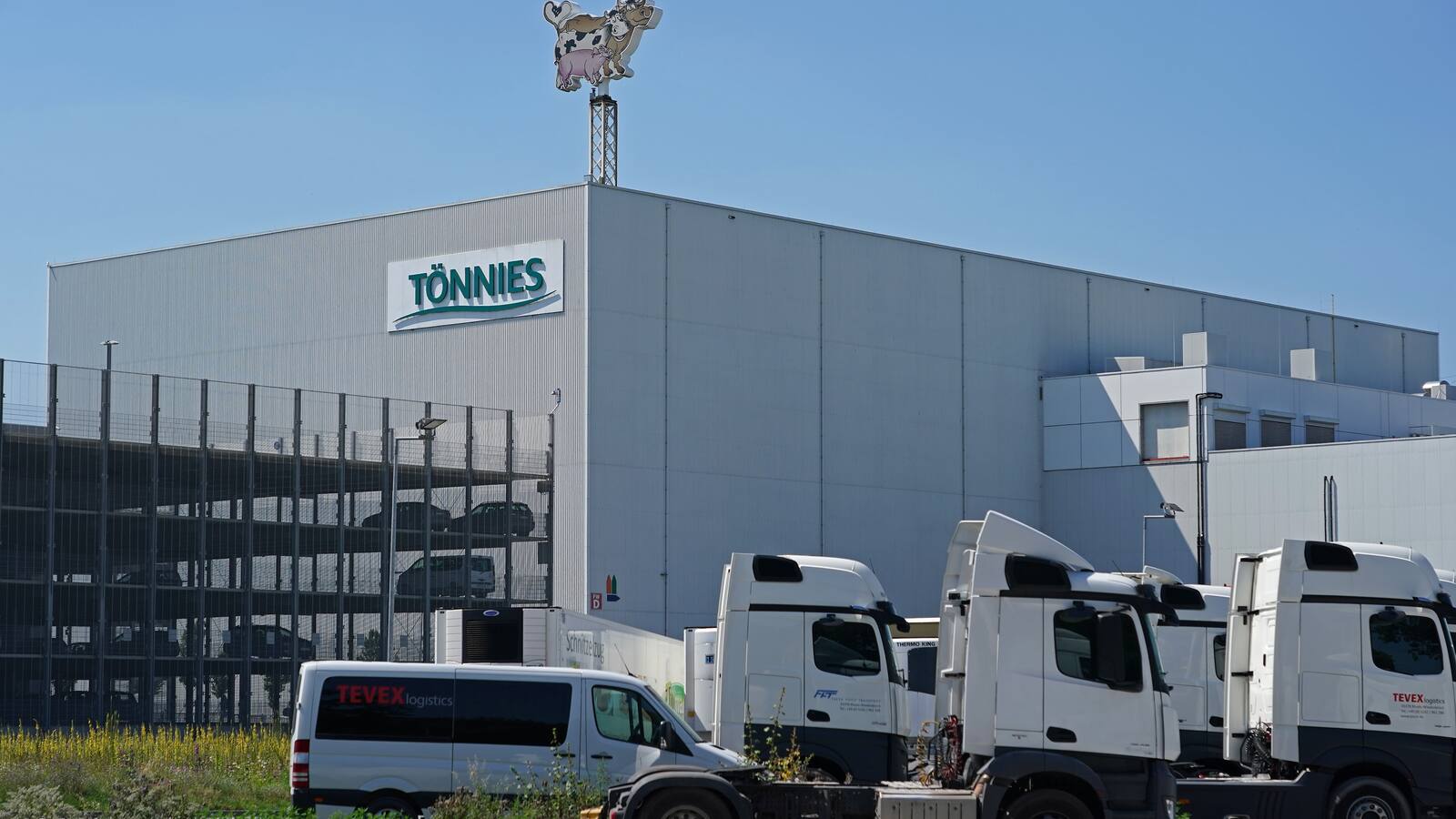
Company Profile:
- Headquarters: Rheda-Wiedenbrück, North Rhine-Westphalia
- Annual revenue: €7.3 billion
- Market position: Germany’s largest meat processor
- Export focus: Asia, Europe, North America
- Product range: Fresh, frozen, and processed pork products
Export Capabilities:
- Global distribution network serving 50+ countries
- Advanced processing facilities with automated production lines
- Quality certifications: IFS, BRC, HACCP, ISO standards
- Cold chain logistics maintaining product integrity
2. Westfleisch: Cooperative Excellence
Westfleisch operates as a cooperative of 4,000+ farmers with €5.5 billion revenue and specializes in premium pork and beef products including traditional German hams. The company emphasizes traceability and sustainable production practices.essfeed
Operational Strengths:
- Cooperative structure: Direct farmer relationships ensuring quality
- Revenue: €5.5 billion (2020)
- Processing capacity: Multiple facilities across Germany
- Export markets: Europe, Asia, North America
- Certifications: QS quality assurance, organic options
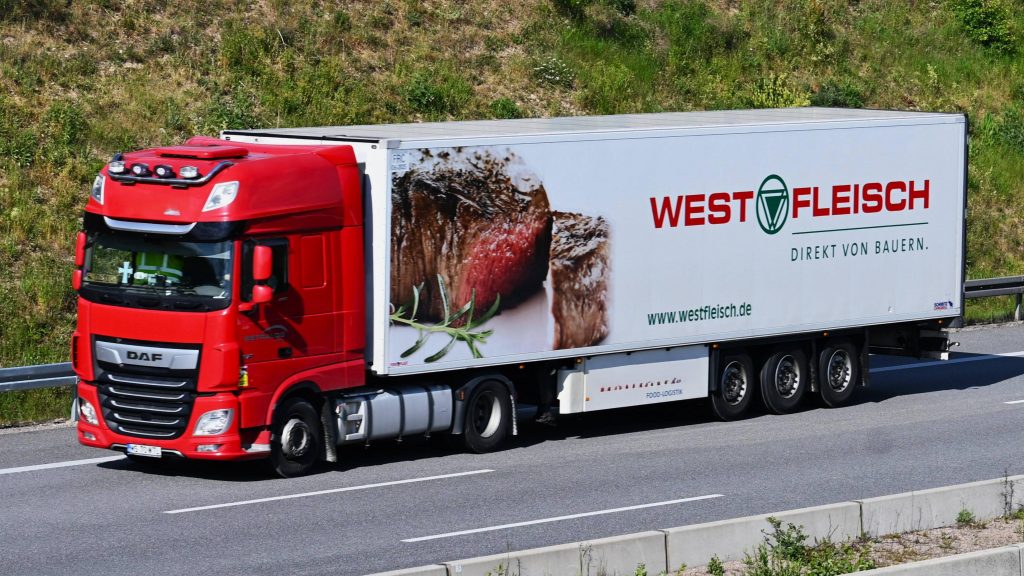
Product Specialization:
- Fresh and cured hams for domestic and export markets
- Traditional German varieties including regional specialties
- Private label manufacturing for international retailers
- Custom processing meeting specific market requirements
3. Bell Food Group: Swiss-German Operations
Bell Food Group maintains significant German operations through Bell Schwarzwälder Schinken GmbH in Schiltach, specializing in authentic Black Forest ham production. The facility produces 5,000 tonnes annually of premium smoked products.bellfoodgroup
Black Forest Facility Specifications:
- Location: Schiltach, Black Forest region
- Annual capacity: 5,000 tonnes
- Production area: 7,300 m²
- Employees: 36 specialized workers
- Certifications: IFS, BIO, QS, ISO 50001
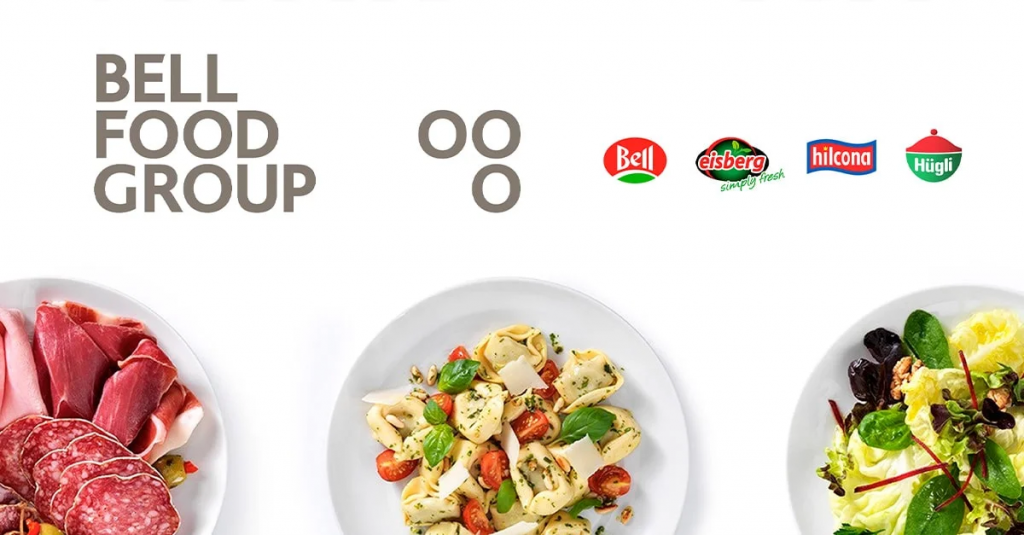
Processing Excellence:
- Traditional smoking methods using local pinewood
- Protected Geographical Indication (PGI) compliance
- Premium positioning in European markets
- Export capabilities to North American markets
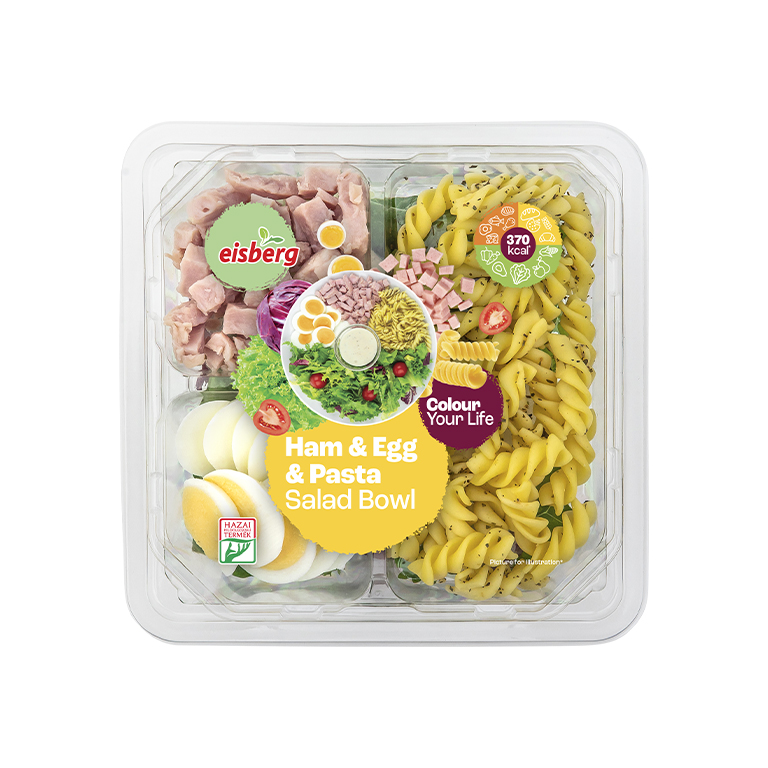
768 × 768
4. Adler Schwarzwald: Black Forest Heritage
Adler Schwarzwald GmbH & Co. KG represents one of the founding members of the Black Forest Ham Manufacturers Association and pioneered retail Black Forest ham sales in 1959. The company maintains traditional production methods while serving modern export markets.adlerschwarzwald
Historical Significance:
- Founded: 1920 (over 100 years of operations)
- Innovation leadership: First retail Black Forest ham (1959)
- Market development: USDA approval for US exports (2017)
- Heritage status: Protected Geographical Indication pioneer
Product Portfolio:
- Black Forest Ham (PGI): Traditional cold-smoked varieties
- Alemannenschinken: Air-dried premium ham (6-month aging)
- Landschinken: Country-style traditional ham
- Specialty sausages: Regional Black Forest varieties
Export Markets:
- United States: USDA-approved facility
- European Union: Premium retail and food service
- Mail order business: Direct consumer sales
- Private label: Manufacturing for major retailers
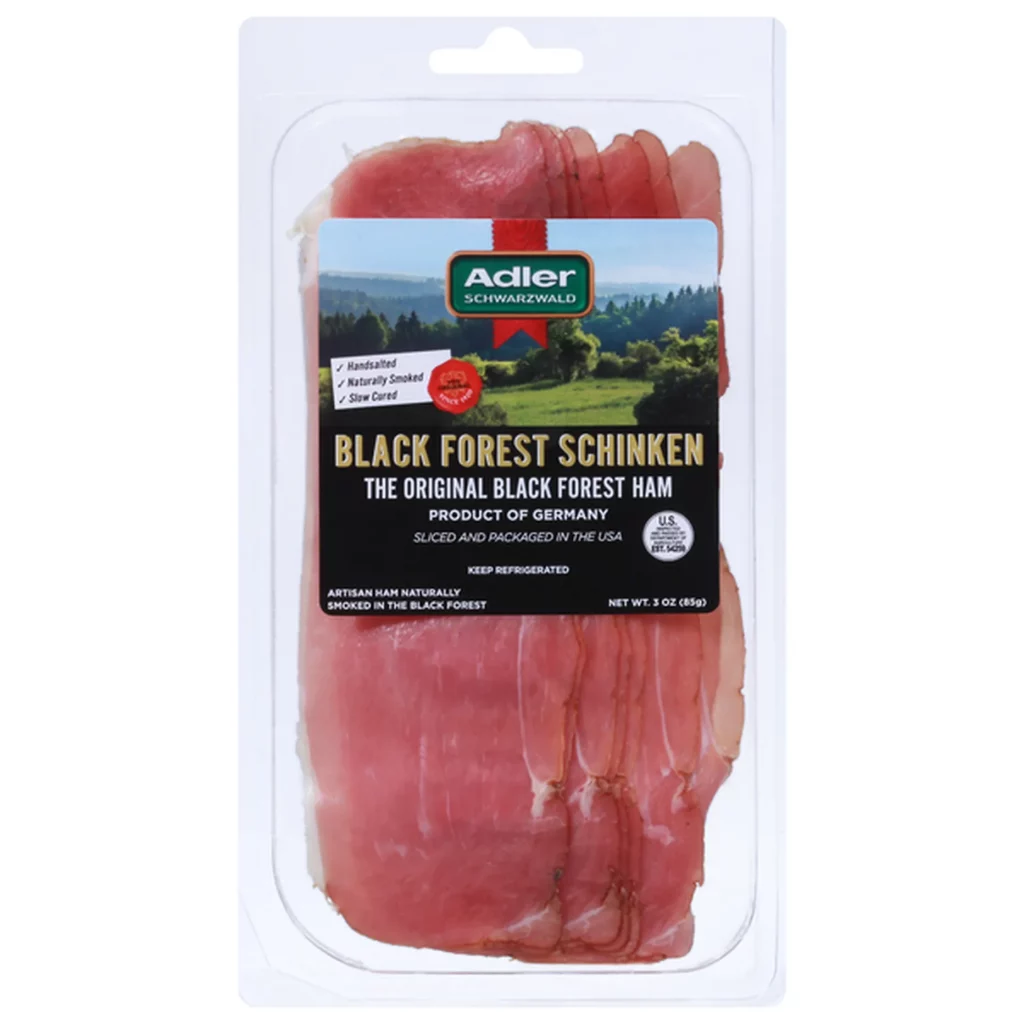
5. Tannenhof: Artisanal Excellence
Tannenhof operates from Niedereschach in the Black Forest region and represents leading Black Forest specialty production with emphasis on traditional craftsmanship and premium quality standards.tannenhof-schinken
Production Philosophy:
- Traditional recipes: Handed-down family formulations
- Artisanal methods: Black Forest butcher craftsmanship
- Quality focus: DLG Gold awards for 31 consecutive years
- Altitude advantage: 750m elevation for optimal curing
Market Positioning:
- Premium segment: High-quality German and European trade
- Traditional varieties: Authentic Black Forest specialties
- Certification compliance: PGI protection standards
- Export capability: European Union distribution network

Ham and Jambon Export Markets and Trade Dynamics
Primary Export Destinations
Germany’s ham exports flow to diverse international markets, with European Union countries representing the largest segment followed by Asian and North American destinations.indexbox
Top Export Markets:
- France: Leading destination for German ham imports
- Italy: Strong demand for premium varieties
- Poland: Growing Eastern European market
- Belgium: Hub for European distribution
- Netherlands: Re-export and processing center
- United States: Premium Black Forest ham market
- China: Emerging high-value market segment
Export Volume and Value Trends
2023 Export Performance:
- Export volume: 143.19 million kg (17.75% decrease YoY)
- Global market share: 8.48% (5th largest exporter worldwide)
- Value trends: Premium positioning maintaining margins despite volume decline
- Market concentration: Top 5 destinations account for 70% of exports
Export Challenges:
- African Swine Fever impact: Third-country market restrictions
- Regulatory compliance: Varying international standards
- Competition: Spanish and Italian premium ham varieties
- Cost pressures: Energy, labor, and raw material inflation
Ham and Jambon Trade Balance and Competitiveness
Germany maintains a strong positive trade balance in ham products, with exports significantly exceeding imports:
Trade Statistics (2023):
- Export volume: 143.19 million kg
- Import volume: 89.44 million kg
- Net exports: 53.75 million kg positive balance
- Import sources: Spain (leading), Italy, Austria primary suppliers
Competitive Advantages:
- Quality reputation: German precision and standards
- Processing technology: Advanced facilities and automation
- Geographic location: Central European distribution hub
- Product diversity: From industrial to artisanal varieties
Specialty Products and Regional Varieties
Black Forest Ham (Schwarzwälder Schinken)
Black Forest Ham represents Germany’s most prestigious ham variety, protected by EU Geographical Indication status since 1997. The product commands premium prices in domestic and international markets.wikipedia
Production Requirements:
- Geographic restriction: Must be produced in Black Forest region
- Traditional methods: Cold smoking using local conifers
- Aging process: Minimum 2-3 weeks curing, 2-6 months aging
- Quality standards: Boneless, approximately 20% fat content
- Distinctive characteristics: Dark exterior, pronounced flavor
Market Performance:
- Premium positioning: 3-5x higher prices than standard ham
- Export success: Strong demand in North America, Europe
- Brand recognition: Global awareness of Black Forest quality
- Production volume: Limited by geographic and process constraints
Regional Specialties and Traditional Varieties
Westfälischer Schinken (Westphalian Ham):
- Production region: North Rhine-Westphalia
- Characteristics: Dry-cured, beech wood smoked
- Market position: Traditional German variety
- Export potential: European Union markets
Holsteiner Schinken:
- Origin: Schleswig-Holstein region
- Processing: Traditional salt-curing methods
- Market focus: Domestic consumption and regional export
- Quality standards: Protected regional designation
Technology Integration and Processing Innovation
Advanced Processing Technologies
German ham manufacturers employ state-of-the-art processing equipment to maintain quality consistency while meeting international food safety standards.
Modern Processing Features:
- Automated curing systems maintaining precise salt and humidity control
- Climate-controlled aging rooms with computerized monitoring
- Advanced smoking equipment ensuring consistent flavor development
- Vacuum packaging systems extending shelf life for export markets
- Traceability technology tracking products from farm to consumer
Ham and Jambon Quality Assurance and Certifications
International Standards Compliance:
- IFS (International Food Standard) for food safety management
- BRC (British Retail Consortium) for global food safety
- HACCP systems implementing critical control points
- ISO certifications for quality management and environmental standards
- Organic certifications for premium market segments
German Quality Systems:
- QS Qualität und Sicherheit monitoring throughout production chain
- DLG quality competitions providing independent quality assessment
- Regional protection schemes maintaining traditional production methods
- Ethical standards addressing animal welfare and sustainability
Market Challenges and Industry Transformation
Current Industry Challenges
Regulatory Pressures:
- Animal welfare regulations increasing production costs
- Environmental standards requiring facility upgrades
- Food safety requirements demanding continuous compliance
- Labor regulations affecting workforce management
Market Dynamics:
- Declining domestic consumption: 57.3 kg per capita (2020), continuing 30-year decline trendeuromeatnews
- Consumer preference shifts toward plant-based alternatives
- Price inflation pressures from energy and raw material costs
- African Swine Fever impact limiting export market access
Industry Adaptation Strategies
Product Innovation:
- Premium positioning focusing on quality over volume
- Artisanal varieties appealing to gourmet markets
- Organic and sustainable options meeting consumer demands
- Convenience products for modern lifestyles
Market Diversification:
- Export expansion into emerging markets
- Value-added products increasing margin potential
- Private label partnerships with international retailers
- E-commerce development for direct consumer sales
Germany Ham and Jambon Future Market Outlook and Growth Opportunities
Market Projections (2025-2030)
Growth Forecasts:
- Ham and bacon market: Expected to reach $3.17 billion by 2030
- Annual growth rate: 3.22% CAGR through the forecast period
- Export opportunities: Emerging markets in Asia and Africa
- Premium segment expansion: Continued growth in artisanal varieties
Investment and Development:
- Processing facility modernization improving efficiency and compliance
- Technology integration enhancing traceability and quality control
- Sustainability initiatives reducing environmental impact
- Research and development creating innovative products
Strategic Opportunities
Market Expansion:
- Asian markets showing growing demand for premium European products
- North American growth in authentic German specialties
- African markets developing middle-class consumer segments
- Online retail platforms enabling direct-to-consumer sales globally
Product Development:
- Health-conscious formulations reducing sodium and fat content
- Functional foods adding nutritional benefits
- Sustainable packaging addressing environmental concerns
- Customized products meeting specific market requirements
Conclusion: Germany’s Continued Ham Market Leadership
Germany’s ham and jambon manufacturing industry demonstrates remarkable resilience and innovation despite facing significant market challenges. With $2.69 billion in annual market value and strong export performance across global markets, German manufacturers maintain their competitive position through quality excellence, technological innovation, and strategic market positioning.
Key Success Factors:
- Premium quality focus differentiating German products in global markets
- Traditional expertise in Black Forest and regional specialties
- Advanced processing technology ensuring consistent quality and safety
- Strong export infrastructure connecting to international markets
- Regulatory compliance meeting diverse international standards
Strategic Advantages:
- Brand recognition for German quality and precision
- Geographic positioning in central Europe for distribution efficiency
- Product diversity from industrial to artisanal varieties
- Innovation capacity adapting to changing market demands
- Sustainability focus addressing environmental and social concerns
As global demand for premium processed meat products continues growing, Germany’s ham manufacturing industry is well-positioned to maintain its leadership role while adapting to evolving consumer preferences and market dynamics. The combination of traditional craftsmanship, modern technology, and strategic market development ensures German ham and jambon products will remain competitive in the international marketplace for decades to come.
Whether producing authentic Black Forest ham for gourmet markets, industrial-scale products for food service applications, or innovative varieties for health-conscious consumers, Germany’s ham manufacturers continue setting standards for quality, safety, and market excellence in the global processed meat industry.
- https://www.statista.com/outlook/cmo/food/meat/processed-meat/ham-bacon/germany
- https://www.ibisworld.com/germany/industry/meat-product-processing/713/
- https://www.ibisworld.com/germany/industry/meat-processing/711/
About us
Try it for yourself. Freshdi.com
Global B2B Marketplace.

